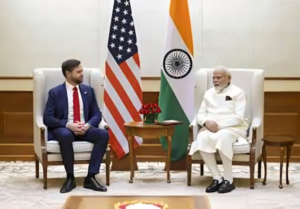India and US Seal Landmark Trade Deal After Rigorous Negotiations
Introduction
After months of intense discussions and intricate diplomacy, India and the United States have finalized a comprehensive trade agreement that promises to reshape bilateral commerce and strengthen economic ties. This landmark deal comes on the heels of tough negotiations, during which both nations tackled sensitive issues ranging from tariffs and market access to intellectual property rights and digital commerce. Stakeholders on both sides are hailing this agreement as a significant step toward deeper cooperation, increased investment, and mutual growth.

Background of Negotiations
Bilateral trade talks between India and the U.S. have a long history, dating back decades. However, recent global shifts in supply chains and geopolitical landscapes intensified the urgency for a robust agreement. Key drivers included:
- Rising economic interdependence: Both nations saw an opportunity to leverage each other’s markets—India’s burgeoning consumer base and the U.S.’s advanced technology and services.
- Global supply chain realignment: Disruptions during the pandemic highlighted the need for diversified suppliers and reliable trade routes.
- Strategic partnerships: Shared interests in technology, defense, and regional stability motivated policymakers to find common ground.
During the latest rounds, negotiators met in New Delhi, Washington, and Geneva, engaging in both formal sessions and informal consultations. Critical sticking points—such as agricultural tariffs, data localization rules, and pharmaceutical patents—were addressed through a blend of concessions and new collaborative frameworks.
Key Components of the Deal
The agreement covers multiple sectors and introduces mechanisms to ensure smooth implementation. The core elements include:
- Tariff Reductions and Phase-Outs
- Elimination of tariffs on a defined list of goods over a five-year schedule.
- Immediate zero-duty access for select technology components and medical devices.
- Market Access and Services
- Expanded access for U.S. financial services in Indian markets.
- Indian IT and engineering services granted “most favored nation” status, streamlining visas and licensing.
- Intellectual Property and Digital Trade
- Strengthened IP protections aligning with international standards.
- Framework for cross-border data flows, ensuring protection of user privacy.
- Dispute Resolution Mechanism
- Establishment of a bilateral trade committee to oversee implementation.
- Fast-track arbitration panels for resolving conflicts within 90 days.
- Sustainability and Labor Standards
- Commitments to environmental safeguards and pollution controls.
- Labor provisions to uphold core International Labour Organization (ILO) standards.
Real-World Impact
With the agreement in place, businesses and consumers can expect tangible benefits almost immediately. Consider these projected outcomes:
- Enhanced Consumer Choices:
- Lower tariffs on electronics, apparel, and specialty foods will broaden product availability.
- Competitive pricing thanks to reduced import duties.
- Boost to Small and Medium Enterprises (SMEs):
- Simplified customs procedures will help smaller exporters tap into new markets.
- Joint capacity–building programs to train Indian SMEs in U.S. regulatory compliance.
- Job Creation and Investment:
- Increased U.S. investment in Indian manufacturing hubs and technology parks.
- Growth in the U.S. service sector, driven by Indian professionals in finance, healthcare, and IT.
- Innovation and Technology Transfer:
- Collaborative research initiatives in clean energy, biotechnology, and artificial intelligence.
- Shared R&D ventures backed by government grants and private-sector funding.

Challenges Overcome
Reaching this milestone required navigating complex political and economic landscapes:
- Agricultural Sensitivities:
Both sides balanced protection for domestic farmers with the need for open markets. The final deal allows limited, quota-based exports of U.S. pulses and dairy products, while safeguarding India’s staple crops. - Data Privacy vs. Cross-Border Trade:
India’s initial insistence on strict data localization was reconciled with U.S. calls for free data flow. The compromise includes joint data centers and standardized privacy protocols. - Pharmaceutical Patents:
India’s generic drug industry and U.S. pharmaceutical giants found common ground through a tiered patent protection scheme and voluntary licensing arrangements for critical medications.
These achievements underscore the value of flexible diplomacy and stakeholder consultation, setting a template for future agreements.
Future Outlook
Looking ahead, this trade deal lays the foundation for broader cooperation:
- Expansion into Emerging Sectors:
- Potential addenda covering space technologies, fintech innovations, and climate solutions.
- Regular review meetings to adapt to evolving industries.
- Strengthened Strategic Partnership:
- Closer collaboration on regional security and digital infrastructure.
- Joint ventures in defense manufacturing under shared technology guidelines.
- Regional Influence:
- The agreement may encourage similar pacts in Asia-Pacific and beyond, reinforcing economic corridors like the Indo-Pacific Economic Framework.
Conclusion
The finalization of the India–U.S. trade agreement marks a pivotal moment in bilateral relations. By carefully balancing national interests with mutual benefits, both countries have crafted a deal that promises economic growth, technological advancement, and deeper strategic ties. As implementation begins, businesses, policymakers, and citizens alike will watch closely to ensure that the full potential of this partnership is realized—driving prosperity and stability well into the future.